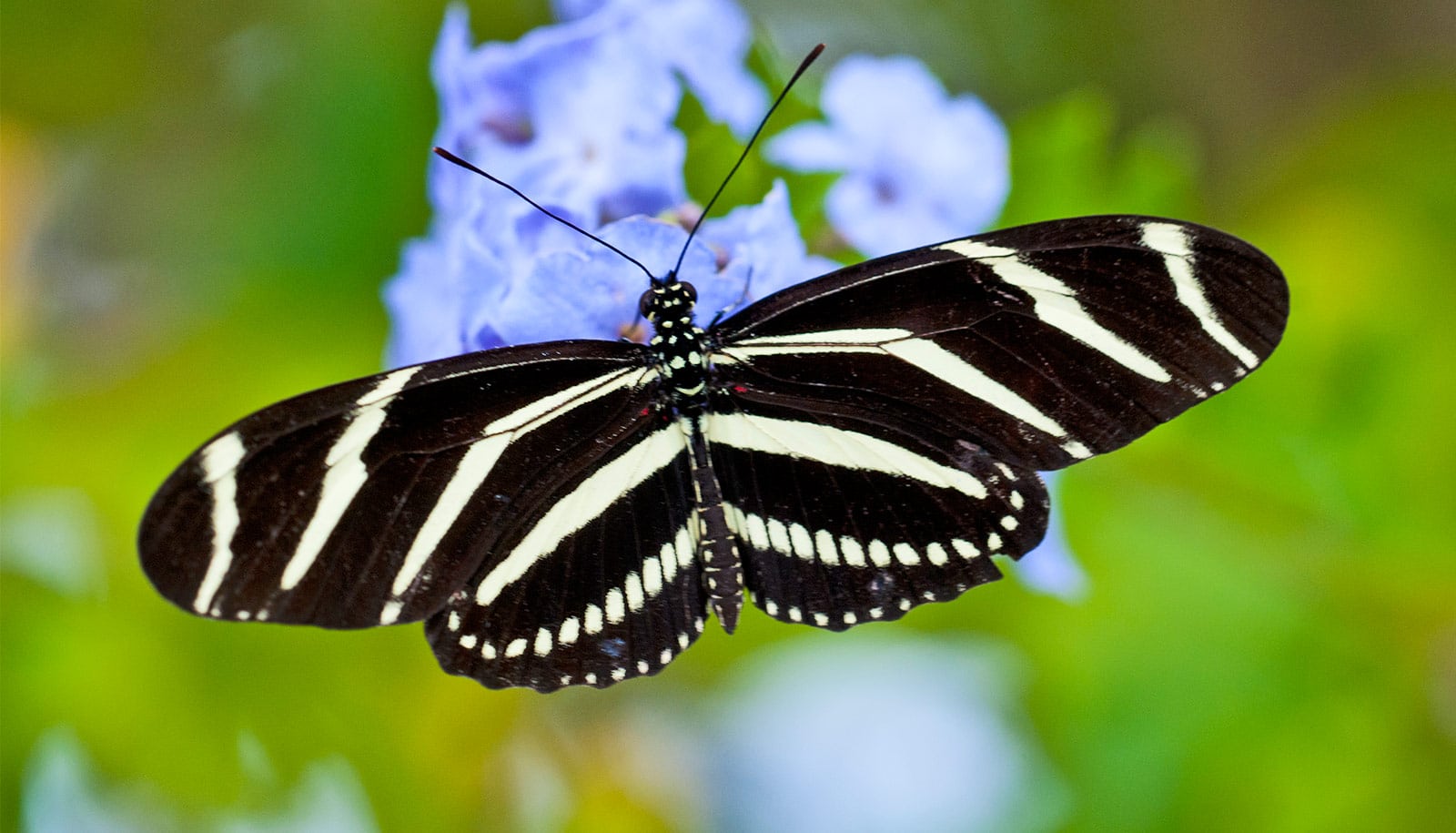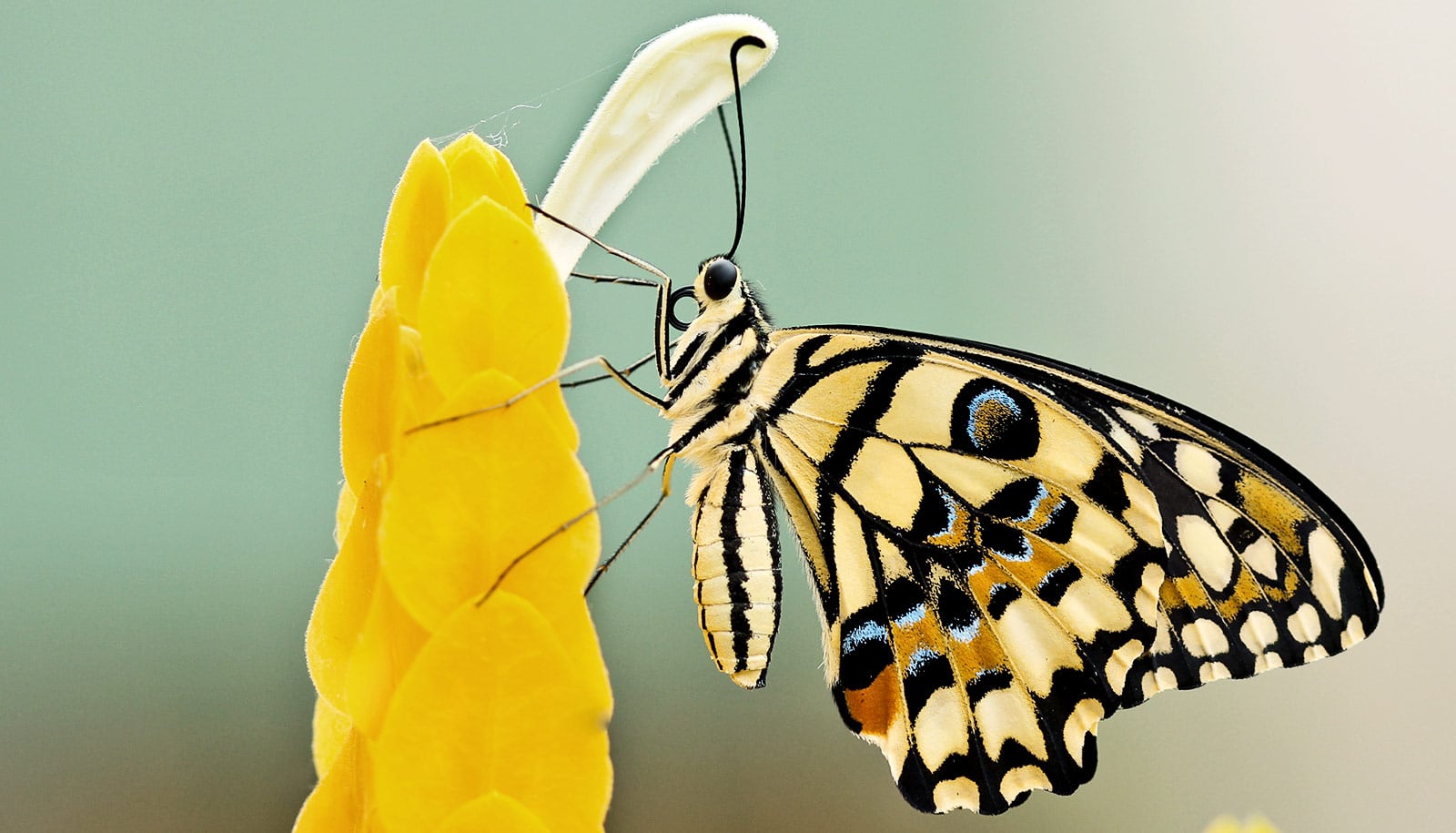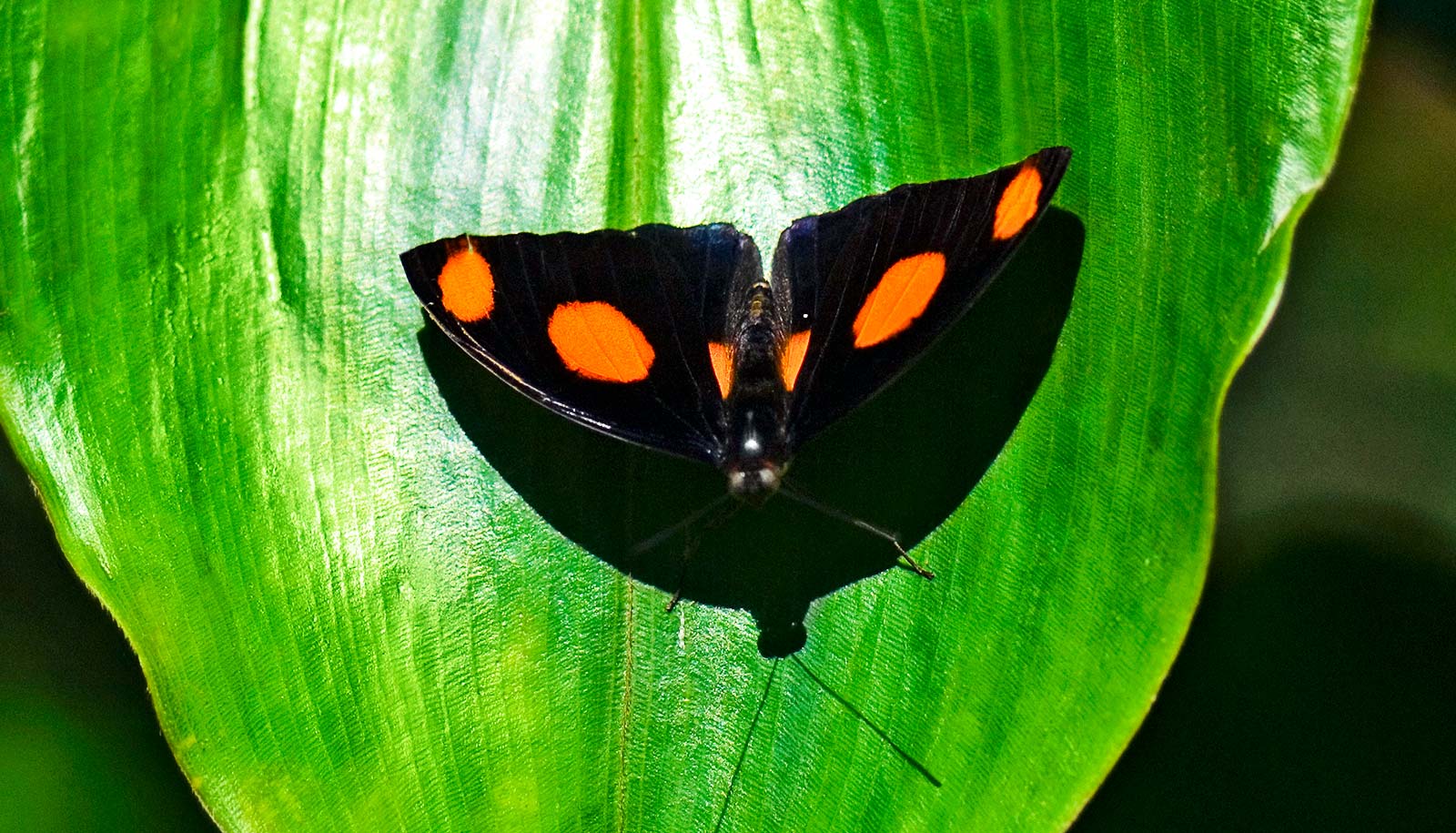In at least one species of butterfly, the variation in the vision of males and females results from a vision gene’s jump onto a sex chromosome.
As butterflies flit among flowers, they don’t all view blossoms the same way. Females of some species perceive ultraviolet color while the males see light and dark.
The new discovery, published in the Proceedings of the National Academy of Sciences, is the first known finding that this kind of genetic change causes sexually dimorphic vision.
The researchers were investigating the Heliconius butterfly genus. Some of its species see ultraviolet color, an array wider than the visible light spectrum that humans perceive. A substance produced by the opsin gene accounts for these butterflies’ visual capacity. In Heliconius species with sexually dimorphic vision, ultraviolet color perception is only present in females.
In searching for the genetic mechanism behind this difference, the biologists selected as their subject Heliconius charithonia, in which visual capacity is sexually dimorphic. When they finished assembling the first complete genome for this species, they learned that its W—or female—chromosome contained the opsin gene.
“This is the first known instance where dimorphic color vision in animals comes from a single gene moving to a sex chromosome,” says first author Mahul Chakraborty, an assistant project scientist in ecology and evolutionary biology at the University of California, Irvine.
“Besides the discovery’s scientific significance, it highlights the complexities of automated genetic sequencing and the crucial role of validation.”
Chakraborty did much of his work on the project while a postdoctoral researcher in the laboratories of co-corresponding authors Adriana Briscoe and J.J. Emerson, both faculty members in the ecology and evolutionary biology department.
Previously assembled genomes for Heliconius charithonia were fragmentary. None included the W chromosome, whose highly repetitive code can pose stumbling blocks for automatic sequencing.
To begin the study, the researchers automatically sequenced the species genome, but this failed to reveal all expected copies of the opsin gene. They next examined the coding manually.
“I went through every bit of the sequencing,” says Angelica Lara, who was an ecology and evolutionary biology undergraduate when she started working with the investigative team. Lara continued to participate in the project as a postbaccalaureate researcher after earning her degree.
“I still couldn’t find the opsin after all that review. Then I realized a part of the code for the W chromosome had not been well formatted, and I believed the opsin had to be located there,” she says.
Lara’s efforts cued Chakraborty to examine that segment more closely. It turned out that the automatic sequencing had dropped that section of the chromosome’s coding, likely stymied by its repetitiveness. Restoring it revealed the opsin gene, and the team confirmed the finding with additional tests.
“Without this manual annotation and investigation, we would have made assumptions that were incorrect and misleading,” says Briscoe, professor of ecology and evolutionary biology. “Now that we’ve made this discovery, we can dig much deeper into the mechanics behind the dimorphism and understanding its purpose.”
Scientists believe the vision difference may be the reason that females and males within some butterfly species feed on different types of flowers. So far, the only other creatures known to have sexually dimorphic vision are certain kinds of primates.
The National Science Foundation, the National Institutes of Health, the UCI Optical Biology Core Facility, and Texas A&M University funded the work.
Source: UC Irvine



